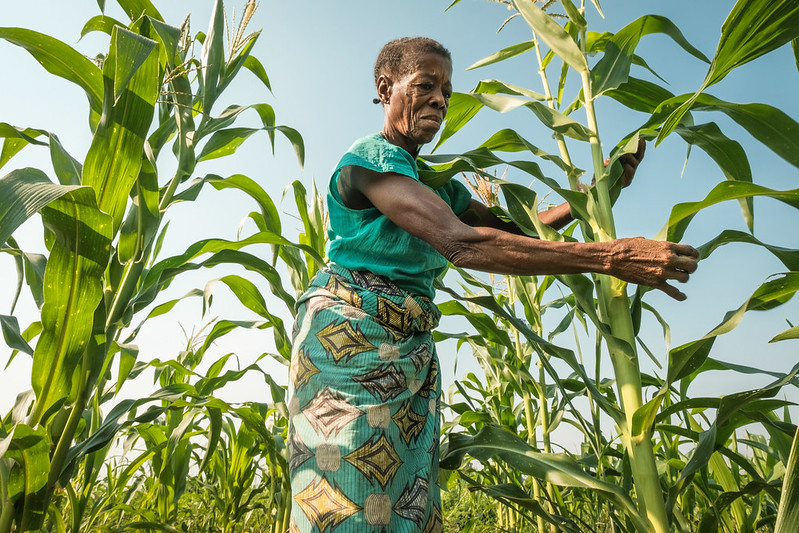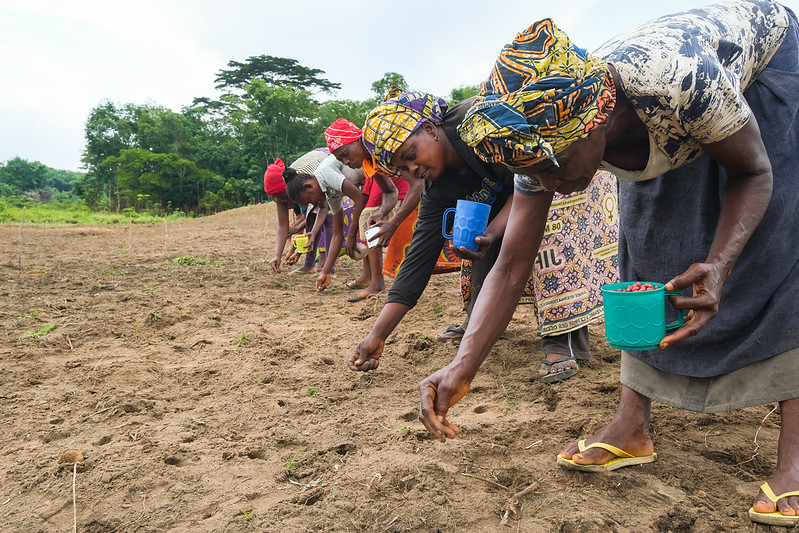
As the world’s population surges towards 10 billion by 2050, calls for intensification of agriculture to produce more food on less land are growing louder. However, policies framed around this narrow view of food security are heavily weighted toward dependency on just three staple crops and the calories they provide, neglecting the damaging ways we produce them.
Already, almost half of the human diet worldwide is based on grain consumption – mainly wheat, rice and maize – while fruits and vegetables are under-consumed in most regions.
Studies have suggested intake ranges of 300–600 grams per day of vegetables and fruit to meet different combinations of health and environmental goals. Yet, on average, across the planet, we’re eating less than what we need. And an estimated 200,000 edible plant species, many of which conveniently grow close to human habitations, go largely untapped.
Intensifying crop production fails to consider the quality of diets and the negative impact on our environment from increased use of inorganic fertilizers, pesticides, herbicides and the reduction of biological diversity. Other unsustainable practices in current forms of agriculture include the continuing and widespread clearing of native vegetation, destruction of forests, growing genetically modified and monocultural crops, overcultivation of soils leading to fertility depletion and erosion, overproduction and wastage and overgrazing.
According to the Food and Agriculture Organization of the United Nations (FAO), 33 percent of the Earth’s soils are already degraded, a proportion that could potentially rise to 90 percent by 2050. This is a shocking statistic, which alone should be a wake-up call for changing our ways. But, unfortunately, it is just one shock among many. After energy consumption, agriculture is one of the largest sources of planet-warming greenhouse gas emissions, accounting for 18 percent of the world’s total, compared with 16 percent for transportation and 3 percent for cement production.

Clearly, a more nuanced approach to growing our food is needed that is sensitive to local conditions, appreciative of foods other than staples, works with nature — including all-important soil — rather than against it and which is coupled with new policies, incentives and markets. This nature-positive approach can be the path to a new, healthier, climate-friendly and sustainable global food system.
But such a system, and the path to it, must not be thought of in isolation. The challenges facing us are all linked: food, nutrition, climate, biodiversity, pollution and socioeconomic development need to be driven by revised policies, addressed together and in harmony with natural forces.
Working with nature and people — particularly, with the networks, relationships, solidarity and knowledge of local and indigenous peoples whose daily lives are lived on the land — is the fundamental approach needed for a rapid transformation of our malfunctioning global food system.
Between 720 and 811 million people in the world faced hunger in 2020 – 161 million more than in 2019, according to FAO.. Nearly 2.37 billion people did not have access to enough food in 2020 – an increase of 320 million people in just one year. The high cost of food and high levels of poverty and income inequality put healthy diets out of reach for around 3 billion people worldwide.
“Research shows that ‘farming with nature’ — combining local, Indigenous and scientific knowledge that focuses on the intricate interactions between trees, seasonal crops, animals, humans, soil, water and the wider natural environment — can provide sufficient and cost-effective nutritious food and sustainable livelihoods,” said Fergus Sinclair, chief scientist and leader of the Resilient Livelihood Systems research group at the Center for International Forestry Research and World Agroforestry (CIFOR-ICRAF).
Such farming is “cost-effective” because it takes into account the cost to nature of agriculture, unlike conventional agriculture’s attitude of “nature’s services are free,” which has led to “fake cheap food” and the accrual of an enormous debt to the planet that is now coming due.
For example, large increases in food supply since 1961 have involved much greater use of synthetic nitrogen fertilizers (an increase of about 800 percent, resulting in around half of the global population relying on these fertilizers to grow food) and redeployment of water resources for irrigation (an increase of more than 100 percent). Yet, it has been shown that deep-rooting trees intercropped with fertilized maize can increase nutrient-use efficiency to 59 percent compared to 10–22 percent for inorganic fertilizers on maize monocultures. And even more importantly, using nitrogen-fixing trees to enhance soil fertility instead of fertilizers can increase crop production up to 30 percent as well as providing a 38 percent increase in products from the trees.
These are just some of the reasons that researchers are finding that a major component of any new food system must be trees, which provide environmental benefits — storing carbon, regulating water, cycling nutrients, providing shade and habitat — and improve the economic viability of farming by diversifying farm portfolios and deepening resilience to extremes of climate with their deep roots and long-term, adaptative lifecycles.
There are many more reasons to create treed agroforestry systems, not the least of which is that foods from trees are important nutritionally yet currently make up only a small proportion of overall food consumption. Many neglected, under-valued and under-researched fruits, vegetables, legumes, grains and roots are often very nutritious and can help diversify our agricultural system to one that provides more balanced, more nutritious and healthier diets and is less prone to environmental shocks.
Natural forests also contain many little known and under-used nutrient-rich fruits and vegetables as well as indirect but critically important benefits from ecosystem services provided to agriculture, such as rainfall and mesa-climatic regulation, habitat for natural predators of crop pests and for the all-important pollinators, without which crops cannot mature.
Over the coming weeks, you can read about the solutions that CIFOR-ICRAF scientists have developed and tested with farmers and forest communities on the ground for decades to build resilient food systems for people and the planet. Examples like fruit-tree portfolios and nutri-scapes highlight the potential of science-based, nature-positive approaches to transform the way we grow food and feed ourselves.
As CIFOR-ICRAF researchers and others are showing, and the planet is demonstrating, now is the time to act, and act swiftly, to transform our harmful ways to more helpful ways of maintaining a greater natural dynamic on the planet we call home so as to feed ourselves and future generations in harmony with the natural world of which we are a part not an isolated phenomenon.




